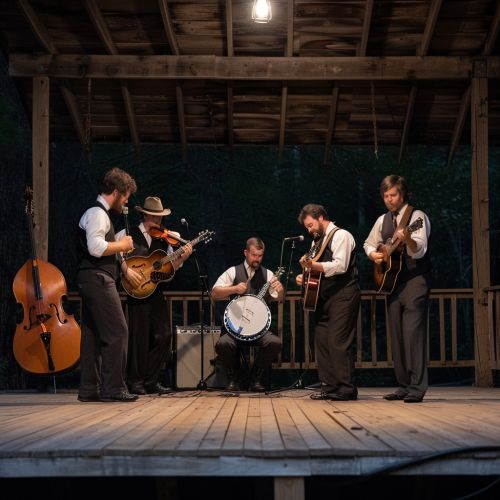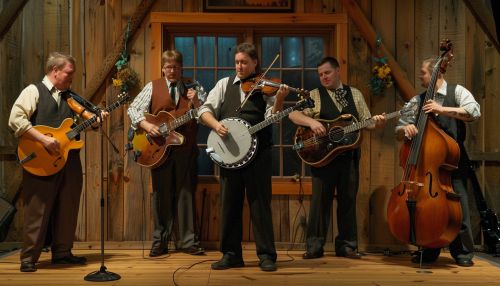Bluegrass music
Origins and History
Bluegrass music is a genre of American roots music that developed in the 1940s in the United States Appalachian region. The genre derives its name from the band Bill Monroe and the Blue Grass Boys. Monroe's performing career spanned from the mid-1930s to the mid-1990s. Bluegrass is influenced by the music of Appalachia, which itself has roots in Irish, Scottish, and English traditional music.
Bill Monroe is often referred to as the "Father of Bluegrass," and his band's original members, Earl Scruggs and Lester Flatt, are frequently credited with developing the "high lonesome sound," a key characteristic of bluegrass music. The high lonesome sound is defined by Monroe's powerful mandolin playing, high-pitched vocals, and the rapid tempos set by Scruggs' innovative banjo style.


Characteristics
Bluegrass music is characterized by its acoustic stringed instruments and emphasis on three-part vocal harmonies. The primary instruments used in bluegrass include the guitar, double bass, banjo, mandolin, and fiddle. The dobro, a type of resonator guitar, is also frequently used. Each instrument has a specific role within a bluegrass ensemble. The guitar typically provides rhythm, the fiddle and mandolin offer melodic and harmonic elements, and the banjo, often played in the three-finger style popularized by Earl Scruggs, provides a driving, syncopated rhythm.
Bluegrass songs are often characterized by a narrative structure, with many songs telling stories of hard life, lost love, or religious themes. The lyrics are typically sung in a high, lonesome vocal style, often featuring tight harmonies in the chorus.
Subgenres and Influences
Bluegrass has several subgenres, including progressive bluegrass, bluegrass gospel, and traditional bluegrass. Progressive Bluegrass incorporates elements from other genres such as jazz, folk, and rock, and often features more complex chord progressions and unconventional song structures. Bluegrass gospel combines the musical elements of bluegrass with Christian-themed lyrics, while traditional bluegrass hews closely to the style established by Bill Monroe and his contemporaries.
Bluegrass has also had a significant influence on other music genres. The acoustic instrumentation and emphasis on virtuosic soloing found in bluegrass can be seen in genres such as country, folk, and Americana. The improvisational nature of bluegrass has also influenced jazz and jam band music.
Bluegrass Today
Today, bluegrass music continues to evolve and thrive. Festivals such as the annual MerleFest in North Carolina and the Telluride Bluegrass Festival in Colorado attract thousands of fans and musicians each year. These festivals often feature a mix of traditional and progressive bluegrass acts, reflecting the genre's wide-ranging appeal.
In addition to festivals, bluegrass music is kept alive through jam sessions, which are informal gatherings of musicians playing together. These sessions are a key part of the bluegrass tradition and provide a way for musicians of all skill levels to participate in the music.
